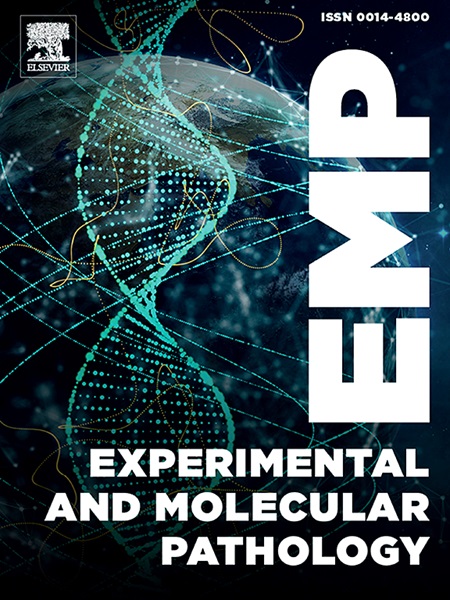Diagnostic next-generation sequencing to detect MYD88 L265P in Lymphoplasmacytic lymphoma compared to ddPCR
IF 3.7
4区 医学
Q2 PATHOLOGY
引用次数: 0
Abstract
Lymphoplasmacytic lymphoma (LPL) is a B-cell lymphoproliferative disorder typically involving the bone marrow with infiltration by small lymphocytes and plasma cells. Studies have identified MYD88 L265P mutation as a diagnostic marker to distinguish LPL from other small B-cell lymphomas. Detection rates for this mutation have varied depending on the analytic methodology, with previous data suggesting that routine next-generation sequencing (NGS) does not demonstrate the required sensitivity to reliably detect MYD88 L265P. NGS has become part of routine clinical testing because it allows detection of variants across multiple genes. To study the utility of NGS in the detection of MYD88 L265P, we performed droplet digital PCR (ddPCR) and routine NGS on a cohort of 34 cases of lymphoid neoplasms (22 LPL, 4 CLL, 1 MCL, 1 MGUS, 2 plasma cell myeloma, and 4 negative bone marrow cases). We utilized manual review and BAMtools to assess MYD88 L265P in NGS cases. Limit of detection for ddPCR was determined to be 0.4 % variant allele frequency (VAF) with 10 ng DNA input. MYD88 L265P VAF detection by NGS and ddPCR was comparable down to 0.5 % VAF (R2 = 0.968). Setting an appropriate threshold for detection based on ddPCR results resulted in zero NGS false positives. We found that low tumor content did not impact the detection of MYD88 L265P by NGS. This study demonstrates that NGS can be a sensitive and reliable method for detection of MYD88 L265P with adequate coverage and specific assessment parameters.
诊断新一代测序检测淋巴浆细胞性淋巴瘤MYD88 L265P与ddPCR的比较
淋巴浆细胞性淋巴瘤(LPL)是一种b淋巴细胞增生性疾病,通常累及骨髓,并有小淋巴细胞和浆细胞浸润。研究发现MYD88 L265P突变是区分LPL与其他小b细胞淋巴瘤的诊断标记。该突变的检出率因分析方法的不同而不同,先前的数据表明常规的下一代测序(NGS)不能证明可靠检测MYD88 L265P所需的灵敏度。NGS已经成为常规临床检测的一部分,因为它可以检测到多个基因的变异。为了研究NGS在MYD88 L265P检测中的应用,我们对34例淋巴样肿瘤(LPL 22例,CLL 4例,MCL 1例,MGUS 1例,浆细胞骨髓瘤2例,骨髓阴性4例)进行了液滴数字PCR和常规NGS检测。我们使用人工检查和BAMtools评估NGS病例的MYD88 L265P。ddPCR检测限为0.4%变异等位基因频率(VAF),输入10 ng DNA。NGS和ddPCR检测MYD88 L265P VAF可达0.5% (R2 = 0.968)。根据ddPCR结果设置合适的检测阈值,NGS假阳性为零。我们发现低肿瘤含量并不影响NGS对MYD88 L265P的检测。本研究表明,NGS检测MYD88 L265P具有足够的覆盖率和特定的评估参数,是一种敏感可靠的检测方法。
本文章由计算机程序翻译,如有差异,请以英文原文为准。
求助全文
约1分钟内获得全文
求助全文
来源期刊
CiteScore
8.90
自引率
0.00%
发文量
78
审稿时长
11.5 weeks
期刊介绍:
Under new editorial leadership, Experimental and Molecular Pathology presents original articles on disease processes in relation to structural and biochemical alterations in mammalian tissues and fluids and on the application of newer techniques of molecular biology to problems of pathology in humans and other animals. The journal also publishes selected interpretive synthesis reviews by bench level investigators working at the "cutting edge" of contemporary research in pathology. In addition, special thematic issues present original research reports that unravel some of Nature''s most jealously guarded secrets on the pathologic basis of disease.
Research Areas include: Stem cells; Neoangiogenesis; Molecular diagnostics; Polymerase chain reaction; In situ hybridization; DNA sequencing; Cell receptors; Carcinogenesis; Pathobiology of neoplasia; Complex infectious diseases; Transplantation; Cytokines; Flow cytomeric analysis; Inflammation; Cellular injury; Immunology and hypersensitivity; Athersclerosis.

 求助内容:
求助内容: 应助结果提醒方式:
应助结果提醒方式:


